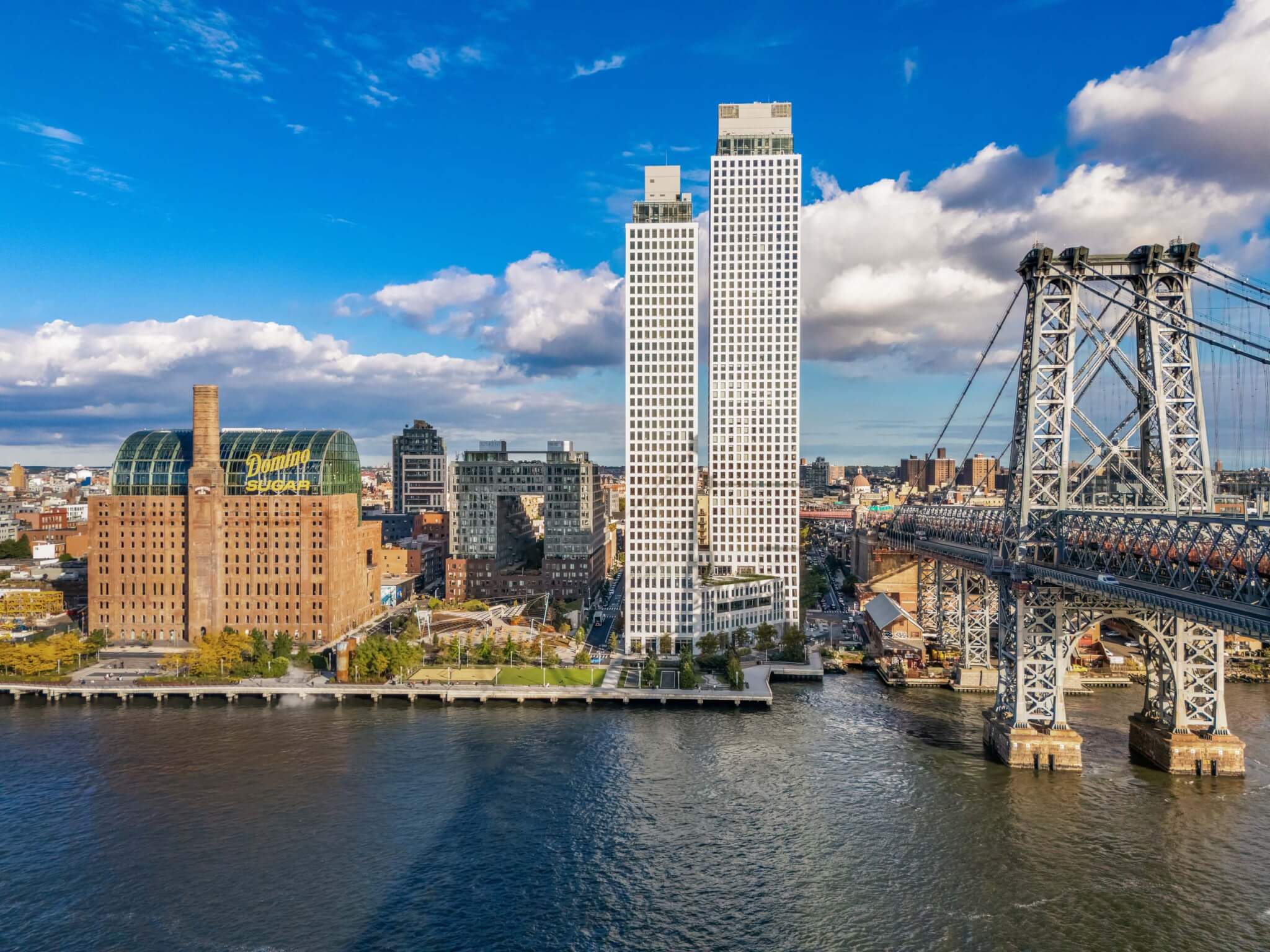- Architect:
- Selldorf Architects
- Location:
- New York City
- Completion Date:
- 2024
A pair of prismatic-white towers now straddle New York City’s Williamsburg Bridge. Designed by Selldorf Architects, One Domino Square is the latest addition to Two Trees Management’s massive redevelopment of the area surrounding Brooklyn’s Domino Sugar Factory. As one passes the towers—via train or car—the buildings shimmer with an iridescent luster—a feature that was achieved through the application of a special coating to Spanish porcelain tiles.

Though enabled by a separate zoning amendment, Two Trees Management’s ambitious redevelopment project follows a landmark 2005 rezoning of North Brooklyn’s once-industrial waterfront, which called for the creation of 50 acres of parkland along the East River. The developer hired SHoP Architects to devise a masterplan for the site.
Projects completed thus far include 325 Kent, a residential building designed by SHoP; Ten Grand Street & One South First, a mixed use development by COOKFOX; and the Refinery at Domino—arguably the centerpiece of the project—an adaptive reuse of the Domino Sugar Factory orchestrated by PAU.

Future projects are also in development such as River Ring, a park and twin mixed-use towers designed by Bjarke Ingels Group (BIG). Plans for Site B, the final component of the development, are still forthcoming.
One Domino Square, the southern-most project within the larger development, offered Selldorf Architects, a practice known primarily for museum renovations, the opportunity to design a highly visible landmark in New York City. Though the firm has completed previous residential projects, this was its first time designing at such a large scale.

Situated on a triangular plot, One Domino’s twin towers were placed at an oblique angle from the bridge and emerge from a 7-story, granite-clad podium. The entrance of the building is adjacent to Domino Square, a privately owned public space designed by Field Operations and Studio Cadena that opened last month.
The buildings consist of a 450 foot condo tower and 550 foot rental tower on the North and South ends of the site, respectively. Both towers are topped by a two-floor glass penthouse and mechanical floors, programs that form a small crown atop each structure.

When specifying One Domino’s facade, Selldorf Architects was attracted to porcelain’s glossy and almost-transparent materiality.
“Porcelain tile gives you a very shiny reflective surface,” Oliver Link, partner at Selldorf Architects, told AN. “So short of doing a glass tower—which is rather ubiquitous throughout the city—we used this product in conjunction with large format windows to create this reflective shimmering surface.”
To create a pearlescent effect, a special coating was applied to the tiles that responds to light and weather conditions. On cloudy days, the panel’s iridescence figures prominently and the upper floors of the white towers blend in with the sky. During sunny weather the opposite is true and the towers stand in stark contrast to the blue sky.

Contrasting with the bare minimalism of the exterior, the towers’ interior amenity spaces are unabashedly colorful. The aquatic center is decked out in multiple shades of green, aqua, and teal tiles, as well as larger matte concrete tiles around the outer edges of the space.
In addition to the indoor aquatic center, the towers also have an outdoor pool, gym, daycare, terraces, event space, and more.

One Domino Square—and its neighbors within Two Tree’s waterfront redevelopment—signify the completion of Williamsburg’s transformation from a working-class neighborhood to one of New York City’s most-desirable luxury districts. The project is also among a batch of new residential towers that have transformed Brooklyn’s skyline. The borough’s new architecture stands as an accurate reflection of its changing economic character.

